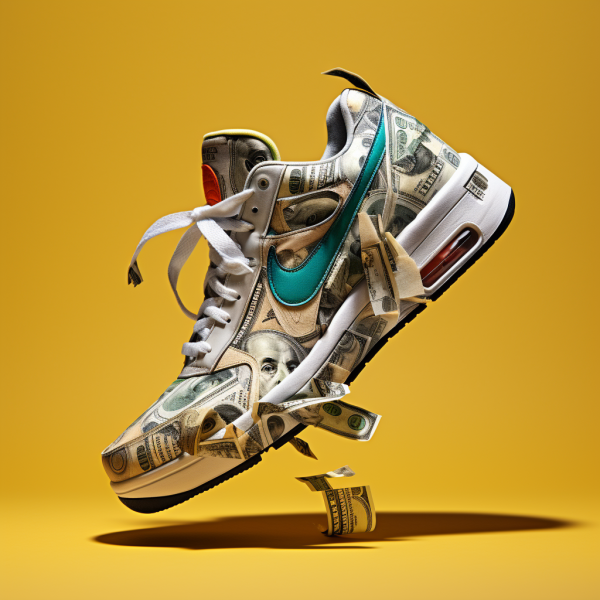By Mike Savage, New Canaan, CT
Once confined to the realms of passion and self-expression, sneaker collecting has undergone a transformative journey, transcending its status as a mere hobby to emerge as a viable investment avenue.
This shift in perspective has led enthusiasts and investors alike to scrutinize the financial aspect of sneaker culture. In this exploration, we will delve into the reasons behind this evolution, examining how collectors now evaluate the potential return on investment, the pivotal role of limited editions, and the burgeoning secondary market for sneakers.
The Rise of Sneaker Culture
Sneaker culture, with its roots firmly planted in urban communities and sports, has blossomed into a global phenomenon. What began as a niche interest has evolved into a subculture that spans demographics and geographies, spurred on by the influence of celebrities, athletes, and the pervasive nature of social media.
As sneakerheads turned their passion into a lifestyle, the financial implications of their obsession began to surface.
Evaluating the Investment Potential
The allure of sneaker collecting as an investment lies in the potential for significant returns. While traditional investments like stocks or real estate may require extensive knowledge of financial markets, sneaker enthusiasts often find solace in the tangible and culturally resonant nature of their investments.
The first step in evaluating the investment potential of sneakers involves understanding the factors that contribute to a shoe’s value.
Limited Editions and Rarity
Central to the financial appeal of sneaker collecting is the concept of limited editions and rarity. Brands strategically release limited quantities of certain sneaker models, creating an artificial scarcity that fuels demand.
This scarcity, combined with unique design elements or collaborations, can catapult a pair of sneakers from being a functional piece of footwear to a coveted collectible.
Collectors keen on maximizing their return on investment often focus on acquiring limited edition releases, as these have demonstrated a historical tendency to appreciate in value over time.
The exclusivity and scarcity associated with such releases contribute to the perception of sneakers as not just commodities but also as cultural artifacts.
Understanding Brand Collaboration
The collaboration between sneaker brands and influential figures from various industries has further fueled the financial potential of sneaker collecting.
Collaborations with athletes, musicians, and fashion designers bring a unique blend of creativity and cultural significance to the market. Sneaker collaborations often result in limited edition releases that carry both the brand’s legacy and the collaborator’s individual style, making them highly sought after by collectors.
Investors navigate this landscape, keeping a keen eye on upcoming collaborations and partnerships, anticipating the potential market impact of these releases. Successful collaboration releases not only appreciate in value but also serve as a testament to the evolving intersection of fashion, culture, and commerce.
The Secondary Market for Sneakers
As sneaker collecting has evolved into a form of investment, a robust secondary market has emerged, providing a platform for buying and selling coveted pairs. Online marketplaces, dedicated sneaker resale platforms, and even physical consignment stores have become integral components of the sneaker investment ecosystem.
The secondary market allows collectors to liquidate their investments or acquire sought-after pairs that they may have missed during the initial release. Prices in the secondary market can vary widely based on factors such as condition, rarity, and cultural significance.
The emergence of authenticated marketplaces has added a layer of security for buyers and sellers, ensuring the legitimacy of the transactions.
Challenges and Considerations
While the financial aspect of sneaker collecting presents lucrative opportunities, it is not without its challenges and can become a true sneaker obsession. The market’s volatility, susceptibility to trends, and the unpredictability of consumer preferences make it a nuanced space.
Collectors must strike a balance between their passion for sneakers and a pragmatic approach to investment, carefully navigating the intersection of culture and commerce.
Conclusion
Sneaker collecting’s journey from a hobby to a financial pursuit is a testament to the dynamic nature of cultural phenomena. The fusion of limited editions, collaborations, and a thriving secondary market has transformed sneakers into tangible assets with potential returns.
As collectors navigate this evolving landscape, the financial aspect of sneaker culture adds a new dimension to the thrill of the hunt, making it an enticing venture for those who seek to combine their love for sneakers with the potential for financial gain.
ABOUT MIKE SAVAGE OF NEW CANAAN, CT
Michael Savage from New Canaan is the Founder of 1-800 Accountant that helps businesses with their accounting services and needs through cutting-edge technology and customer support. Mike Savage also has created a foundation with his wife Sandra to provide goods and relief for impoverished children and families in Honduras.
In his spare time, Savage enjoys creating unique koi ponds, collecting Michael Jordan sneakers, vintage Lego sets, and admiring muscle cars and unique pop art. He and his wife also spearhead the Savage-Rivera foundation to help impoverished families in Honduras.
